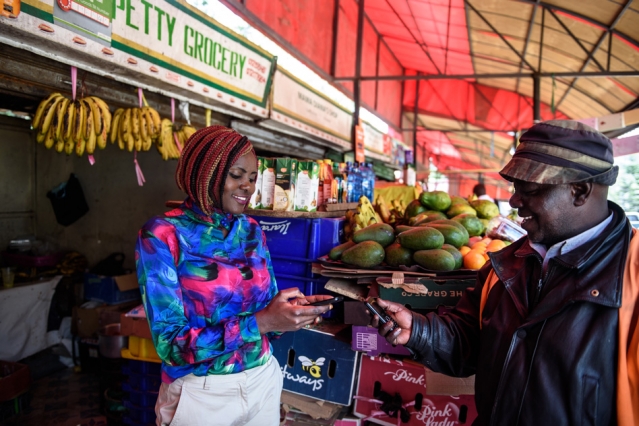- A new study estimates that access to mobile-money services increased daily per capita consumption levels
- Mobile-money services lift Kenyans out of poverty.
- The unified payments interface (UPI) allows a customer to pay directly from a bank account to different merchants, both online and offline
Mobile payments is a mode of payment using mobile phones. Instead of using methods like cash, cheque, and credit card, a customer can use a mobile phone to transfer money or to pay for goods and services. A customer can transfer money or pay for goods and services by sending an SMS, using a Java application over GPRS, a WAP service, over IVR or other mobile communication technologies.
Growth of mobile phones in India
However, India is the second-largest telecommunications market and has 929.37 million mobile phone customers. Mobile phones are quite common even in the remote villages. The mobile phone industry is growing at a rate of over 200 million per year. It was expected to touch the one billion mark by 2013.
In the next two years, a bank can lend a vegetable vendor of a few hundred rupees which she will be able to repay at the end of the day. All this will be done via mobile in a matter of a few minutes and in fact, she'll have a number of firms offering her loans allowing her to pick and choose the one that suits her the best.
One of the biggest pieces of the puzzle to make this possible, digital payments, will soon be accessible to players - banks, lending firms, mobile wallets, to begin tinkering with and build their services. The unified payments interface (UPI) that's being built by the National Payments Corporation of India. UPI is a payment system that allows money transfer between any two bank accounts by using a smartphone.
What is UPI ?
UPI allows a customer to pay directly from a bank account to different merchants, both online and offline, without the hassle of typing credit card details, IFSC code, or net banking/wallet passwords.
How safe is UPI?
It is safe as the customers only share a virtual address and provide no other sensitive information.
Mobile-money services lift Kenyans out of poverty
Since 2008, MIT economist Tavneet Suri has studied the financial and social impacts of Kenyan mobile-money services, which allow users to store and exchange monetary values via mobile phone. Her work has shown that these services have helped Kenyans save more money and weather financial storms, among other benefits.
Now, Suri is co-author of a new paper showing that mobile-money services have had notable long-term effects on poverty reduction in Kenya — especially among female-headed households — and have inspired a surprising occupation shift among women.
Published in today’s issue of Science, the study estimates that, since 2008, access to mobile-money services increased daily per capita consumption levels of 194,000 — or 2 percent — of Kenyan households, lifting them out of extreme poverty (living on less than $1.25 per day).
But there’s an interesting gender effect: Female-headed households saw far greater increases in consumption than male-headed households. Moreover, mobile-money services have helped an estimated 185,000 women move from farming to business occupations.
“Previously, we’ve shown mobile money helps you with financial resilience. But no one has understood, if you improve resilience, what happens over the longer term. This is the first study that looks at long-term poverty reduction and at gender,” says Suri, an associate professor at the MIT Sloan School of Management, who co-authored the paper with longtime collaborator William Jack, an economist at Georgetown University.
By 2015, more than 270 mobile-money services were operating in 93 countries, with an estimated 411 million accounts. The Kenyan study is important, Suri says, because it shows that mobile-money services aren’t just conveniences but do, in fact, have a positive impact on people’s livelihoods. “[That] can be useful for regulators trying to figure out if they want to allow it in their country, or whether someone wants to start a service in their country as an entrepreneur,” Suri says.
Source: business-standard.com, thehindu.com, wikipedia.org, news.mit.edu
